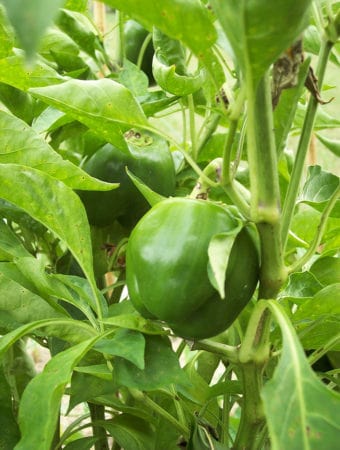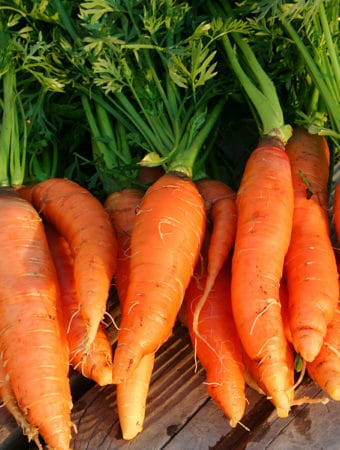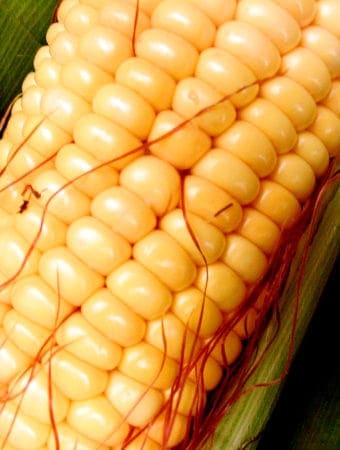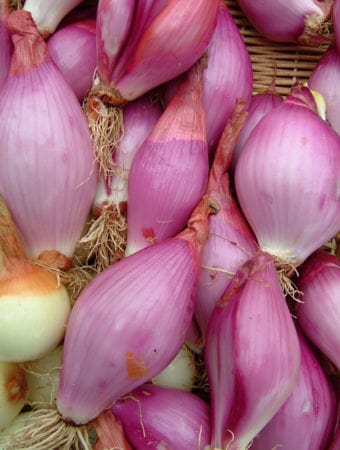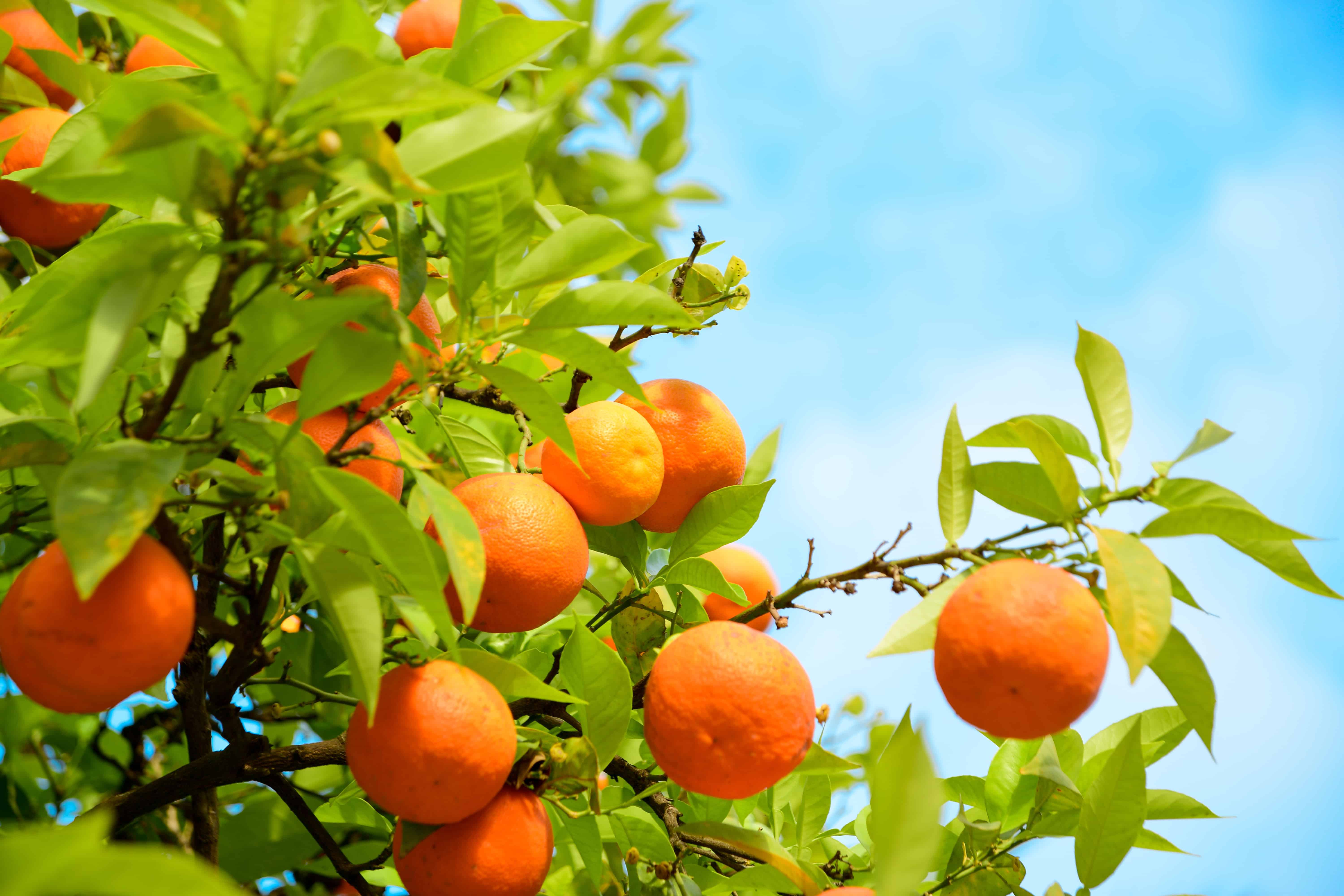
Oranges can be divided into three basic groups—sweet oranges, blood oranges, and sour oranges. Sweet oranges can be divided into two subgroups—navel oranges and common oranges.
Navel oranges and common oranges are the most commonly grown oranges both in home gardens and commercially. Navel oranges are mostly peeled and eaten fresh out of hand. Common oranges are mostly used to make juice, though some are also eaten out of hand.
Blood oranges can be eaten fresh out of hand or juiced.
Sour oranges—also called bitter oranges—are used to make preserves such as marmalade but are most commonly planted as ornamentals in the landscape.
See also: How to Grow Citrus
Choosing an Orange
When you choose an orange, consider first how you plan to use the fruit—for fresh eating or juicing.
Next, consider the size of the tree and the space you have in your garden to grow a tree or trees.
Then consider if the tree can grow where you live; can it survive winter cold, are the days during the growing season hot enough, and are the nights cool or warm.
Ask the citrus expert at the nearest Cooperative Extension Service which orange varieties grow best in your area. Check with the citrus person at a nearby garden center for which varieties are available.
Most home gardeners grow sweet oranges—either navel or common.
Sweet Oranges
Sweet oranges—navel and common–are the most widely grown and the most popular. Navel oranges are mostly used for eating fresh. Common oranges are mostly used for juicing.
Sweet oranges grow 12 to 16 feet tall depending on the rootstock. ‘Valencia’ common orange grows taller to about 20 feet. Space trees about 16 feet apart.
Sweet oranges can withstand colder temperatures than lemons but not as much cold as mandarins. The foliage of sweet oranges will be damaged when temperatures drop below 26°F; the fruit will be damaged at temperatures below 27°F.
Sweet orange flesh contains a blend of sugar and acid; sugar forms during hot days and acid during cool nights. The most flavorful sweet oranges are found where there is a wide daily fluctuation of temperature.
 Navel Oranges
Navel Oranges
Navel oranges are grown for eating fresh out of hand. They have a crisp, sweet, rich flavor. They are easy to peel and the sections are easily divided. They are almost wholly seedless.
Navel oranges are usually not juiced; the juice is immediately sweet but after a short time it becomes bitter tasting.
The most widely grown navel orange is the ‘Washington’.
The navel orange gets its name from the small hole or protrusion at the end of the fruit opposite the stem. That hole looks like a belly button or navel. The hole is caused by the development of a small secondary fruit inside the larger fruit. The enlargement of the secondary fruit causes a small hole and sometimes a protrusion to form at the blossom end of the fruit. Sliced from top to bottom, the secondary fruit looks like a wedge-shaped segment at the end of the fruit.
Navel oranges grow best in subtropical California where days are warm and nights are cool. Sugars are formed during the warm days and acids form during the cool nights; the end result is a rich sweet-tart flavor.
Navels do not grow well in Florida where summer day and night temperatures do not vary much. In humid sub-tropic regions, navel oranges will be very sweet, but there will be little acid or complexity to the flavor. In cool regions, the flavor will be tart.
Generally, navel oranges ripen before the onset of cold winter weather; cold can damage the crop.
Navel oranges are genetically unstable and so can develop mutations; these mutations may affect only a branch or two on a tree; mutations are known as ‘bud sports’. When fruit on a bud sport has a desirable trait or traits, the sport can be developed into a separate variety. There are several ‘Washington’ bud sport varieties.
Common Oranges
Common oranges are usually juiced. They are only sometimes eaten fresh out of hand. They are juicer, seedier, and harder to peel than navels.
The juice of common oranges, unlike navels, does not turn bitter when stored. The juice can be used fresh, frozen, or processed.
‘Valencia’ is the most widely grown common orange.
Common oranges are adapted to all citrus-growing regions. They grow particularly well in Florida. They also grow well in Texas and the Gulf Coast states.
In Arizona, common oranges such as ‘Hamlin’, ‘Trovita’, ‘Diller’, and ‘Pineapple’ are sold under the name Arizona Sweets.
Common oranges do not have navels.
 Blood Oranges
Blood Oranges
Blood oranges are named for their reddish to reddish-purple flesh and juice.
Blood oranges can be eaten fresh or juiced. The fruit is harder to peel than navel oranges.
The flavor of blood oranges is sometimes referred to as complex; the flesh and juice have a rich-berry tinged flavor. The juice is used to make sauces, sorbets, and desserts. The juice of blood oranges does not store well; it becomes off tasting when stored.
Blood oranges require warm days for sugars to form and cool nights for color to develop. The coloration of blood oranges varies in intensity depending on the variety, location, and tree maturity.
Blood oranges grow particularly well in the interior valleys of California. Their growth and yield are inconsistent in Florida and Texas where they may not develop red pigmentation.
Blood oranges ripen in early winter in warm-winter regions and in spring in cooler-winter regions.
Blood oranges reach a height of 20 to 25 feet and wide as standards.
 Sour Oranges
Sour Oranges
Sour oranges are highly acidic and bitter tasting. They are more bitter tasting than limes. Sour oranges are also called bitter oranges.
Sour orange fruit is used to make marmalade, sauces, liqueurs, and drinks. ‘Seville’ is a favorite for marmalades.
The sour oranges are also used as street trees, hedges, patio trees, and for other ornamental plantings.
The rootstock of sour oranges is used for other types of citrus.
Sour oranges grow to 20 feet tall as standards; dwarf trees grow 5 to 10 feet tall.
Common Sweet Orange Varieties
- Arizona Sweets: non-navel oranges often grown in Arizona; includes ‘Diller;, ‘Hamlin’, ‘Marrs’, ‘Pineapple’, and ‘Trovita’. Plant tags may only specify ‘Arizona Sweets’, not the exact variety.
- ‘Diller’: small to medium fruit with few seeds; juicy, sweet flavor; bright orange flesh; use for juice; not easy to peel; holds well on tree; early ripening; small to medium tree; above-average cold tolerance; adapted to desert; an Arizona Sweet.
- ‘Hamlin’: small to medium-size fruit, usually seedless; tender, sweet, and juicy flesh with low acidity; excellent for juice; easy to peel; very early ripening; medium to large tree; tolerates cold; grown primarily in Florida, along Gulf Coast, and Texas; one of the Arizona sweets.
- ‘Marrs’: medium to large fruit (on small tree) with few to many seeds; yellow-orange rind; juicy, sweet flavor, low acid; often juiced; not easy to peel; ripening late in season (fall into winter) for best flavor; small, naturally dwarf tree; fruit borne in clusters near outside of tree; grown primarily in Texas and Arizona; an Arizona Sweet. ‘Marrs’ is a navel-less sport of ‘Washington’.
- ‘Midsweet’: Medium size fruit, moderately seedy; dark juice; ripening midseason; medium size tree; hardier than ‘Pineapple’.
- ‘Parson Brown’: medium to large fruit, very seedy; pale yellow flesh; juicy sweet; excellent for orange juice; very early ripening; large tree; heavy crop; cold tolerant; best grown in Florida where it was once the main crop but is being replaced by ‘Hamlin’.
- ‘Pineapple’: medium to large size, orange fruit, moderately seedy, thick skin; rich and sweet flavor, pineapple fragrance; very juicy; good for fresh eating; not easy to peel; midseason ripening; does not hold on tree well; medium to large thornless tree; bears heavy crop alternate years; sensitive to frost; grown primarily in Florida, Texas, and Arizona; an Arizona Sweet.
- ‘Shamouti’ (‘Jaffa’): medium to large, light orange fruit nearly seedless; firm, fragrant, sweet flesh; pebbly rind; easy to peel; fruit holds on tree; medium size, thornless tree; popular in Europe, also in California.
- ‘Trovita’: small to medium fruit, few seeds; sweet and juicy, flavorful without high heat; good eaten fresh, also a juice orange; juicier than navels; ripening winter into spring; adapted to desert and coastal California—wider range than ‘Washington’ navel; fruits in deserts of Arizona and California; tends to bear heavily every other year.
- ‘Valencia’: medium to large orange fruit, few seeds; very juicy and sweet; slightly more acid than a navel; abundant juice—best of the juice oranges; more difficult to peel than navels; slightly acid in cool regions; ripens midwinter in warm regions, beginning of summer in cool regions; subject to cold damage; fruit holds on tree for months; large tree, tends to alternate bear heavy crops; adapted to wide range of conditions; quality improves as fruit hangs on tree; in hot weather fruit can re-green, revert from orange to green skin, but quality is not affected; widely adapted; known for excellent quality; most commonly grown of all citrus.
- Improved ‘Valencia’ types: new varieties developed from ‘Valencia’ include ‘Delta’. ‘Midknight’, ‘Rohde Red’.
See also: How to Pick a Ripe Orange
Navel Sweet Orange Varieties
- ‘Cara Cara Pink Navel’: large, deep orange fruit with small navel; seedless fruit; salmon-pink to deep red flesh; excellent flavor (navel orange flavor—does not have the berry-like flavor of blood oranges); though pigmented this is not a blood orange; early ripening; fruit holds well on tree; small to medium-size tree.
- ‘Fukumoto’: newer variety with excellent flavor; orange-red rind similar to ‘Minneola’ tangelo.
- ‘Late Lane’: similar to ‘Washington’.
- ‘Robertson Navel’: medium to large fruit; moderately juicy; identical to ‘Washington’ but fruit is smaller; ripens two or three weeks earlier than ‘Washington’; small, slow growth habit for home gardens; more heat resistant than ‘Washington’.
- ‘Skaggs Bonanza’: bud sport of ‘Washington’ navel; bears at an earlier age; ripens two weeks earlier than ‘Washington’; rich and sweet flavor; moderately juicy; better choice than ‘Washington’ where frost is a concern.
- ‘Summernavel’: large fruit with thick rough rind; flavor similar to ‘Washington’ navel; moderately juicy; ripens late; bud sport of ‘Washington’ navel; a good choice for espalier.
- ‘Washington Navel’: large fruit; thick orange rind; seedless; excellent, rich flavor balance of sugar and acid, moderately juicy; easy to peel; the standard eating orange; fruit ripens fall into winter; best navel variety; produces poorly in desert and cool coastal areas; can produce fruit where winters are colder.
- Other Navels: ‘Atwood’, ‘Beck’, ‘Everhart’, ‘Fischer’, ‘Newhall’, ‘N33E’, ‘Thompson’, ‘Tule Gold’.’
See also: Navel Orange Varieties
Blood Orange Varieties
- ‘Moro’: medium, red-blushed rind, almost seedless fruit; violet or deep burgundy flesh; juicy, pleasant sweet-tart flavor with distinctive aroma; very early ripening; develops good flavor in cool coastal areas; fruit holds in clusters on tree but becomes musky if left too long; medium size tree; tends to bear heavily in alternate years.
- ‘Sanguinelli’: small to medium, oblong fruit with few to no seeds; deep red rind, orange flesh with red streaks; juicy; distinctive tart-sweet excellent flavor; rind usually blushed deep red; most popular blood orange; holds well on the tree; small to medium size tree, almost thornless.
- ‘Tarocco’: medium to large fruit with few seeds; firm, juicy flesh, rich, raspberry-flavor; high juice content; does not hold well on the tree; medium size tree; grows best in the interior of California.
Sour Orange Varieties
- ‘Bergamot’ (sour orange-lime hybrid): medium to large fruit, very seedy; aromatic rind; small to medium size tree; not cold tolerant.
- ‘Bouquet des Fleurs’: small to medium size deep orange fruit; aromatic flowers, considered most fragrant of all citrus; small, thornless tree; an ornamental tree for patios with aromatic flowers; blossom oils used in perfume; use for hedge.
- ‘Chinotto’: small, flattened, deep orange fruit; juicy and sour; fruit used for making jellies and preserves; small, thornless tree; good ornamental, container tree or hedge to 7 feet tall.
- ‘Seville’: medium size, flattened fruit; juicy but very sour; use in marmalade; medium size thorny tree; excellent ornamental tree for home gardens.
Also of interest:
How to Plant, Grow, Prune, and Harvest Citrus
Oranges: Sweet and Bitter Basics



 Navel Oranges
Navel Oranges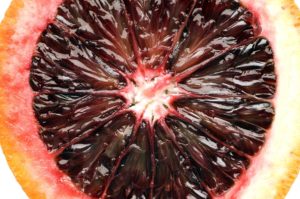 Blood Oranges
Blood Oranges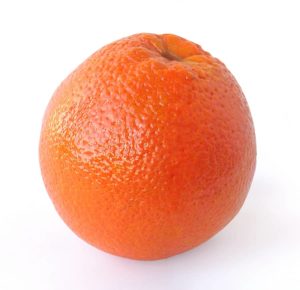 Sour Oranges
Sour Oranges

